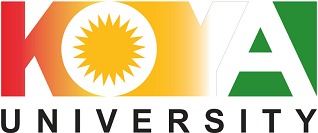Challenges of Implementing the Student-Centered Learning Approach at Koya University
DOI:
https://doi.org/10.14500/kujhss.v8n2y2025.pp41-47Keywords:
Challenges, Student-centered, Pedagogy, Environment Learning, BolognaAbstract
The objective of this study is to identify the primary obstacles faced by educators in implementing the student-centered approach at Koya University, particularly within the Social and Human Sciences departments, where the Bologna Process has been in use for the past two years. The study examines various factors that directly influence the effectiveness of this pedagogical method. The research was conducted through Semi-Structured interview with a specific sample of 20 Lecturers who has completed pedagogical training and possess experience in utilizing the student-centered approach at Koya University. The population consists of lecturers from Koya University, with focusing on the Humanities and Social Sciences departments for the academic years 2023 and 2024. The findings indicate that the primary challenges include limited time, insufficient resources, and a significant number of students unfamiliar with the student-centered approach. This unfamiliarity creates an additional barrier in transitioning from a teacher-centered to a student-centered model of instruction. Furthermore, the lack of collaboration among educators, the inconsistency in teaching methods, and the weak linkage between the university and the community are identified as critical impediments to effective student-centered learning.
Downloads
References
Aslan, S., & Reigeluth, C. M. (2015). Examining the challenges of learner-centered education. Phi Delta Kappan, 97(4), 63–68.
Chaudhary, S. (2024). Challenges in student-centered learning. International Journal for Research in Applied Science and Engineering Technology, 12(7), 983–986. https://doi.org/10.22214/ijraset.2024.63702
Emenyeonu, O. C. (2012). Student-centered learning in Oman: Challenges and pitfalls. International Journal of Learning and Development, 2(5), 243. https://doi.org/10.5296/ijld.v2i5.2549
Handayani, S. A., Noni, N., & Ariyani, A. (2023). Challenges faced by students in learning listening comprehension in SMAN 2 Jeneponto. PERFORMANCE: Journal of English Education and Literature, 2(2), 195.
Katawazai, R. (2021). Implementing outcome-based education and student-centered learning in Afghan public universities: The current practices and challenges. Heliyon, 7(5), Article e07076. https://doi.org/10.1016/j.heliyon.2021.e07076
Kumar, K. D. (2016). Challenges of implementing student-centered strategies in classrooms. International Research Journal of Engineering and Technology (IRJET, 3(12), 1224.
Lynch, M. (2022, July 21). What is student-centered learning and why is it important? The Edvocate. https://www.theedadvocate.org/what-is-student-centered-learning-and-why-is-it-important
Moges, B. (2019). Contemporary Teaching-Learning Practices: Implementation and Challenges of Student-Centered Learning Approach in Higher Education of Ethiopia. Journal of Education, Society and Behavioural Science, 32(4), 1–16. https://doi.org/10.9734/jesbs/2019/v32i430181
Tekle, G., & Fesshaye, H. (2017). Investigating the challenges of student-centered learning in higher education institutions in Eritrea. African Research Journal of Education and Social Sciences, 4(3). https://www.arjess.org
van Laar, E., van Deursen, A. J. A. M., van Dijk, J. A. G. M., & de Haan, J. (2017). The relation between 21st-century skills and digital skills: A systematic literature review. Computers in Human Behavior, 72, 577–588. https://doi.org/10.1016/j.chb.2017.03.010
Wulf, C. (2019). “From teaching to learning”: Characteristics and challenges of a student-centered learning culture. In H. A. Mieg (Ed.), Inquiry-based learning – Undergraduate research (pp. 75–90). Springer. https://doi.org/10.1007/978-3-030-14223-0_5
Zohrabi, M., Torabi, M. A., & Baybourdiani, P. (2012). Teacher-centered and/or student-centered learning: English language in Iran. English Language and Literature Studies, 2(3), 18–30. https://doi.org/10.5539/ells.v2n3p18
Treve, M. (2024). Comparative analysis of teacher-centered and student-centered learning in the context of higher education: A co-word analysis. Iberoamerican Journal of Science Measurement and Communication, 4(2), 1–12. https://doi.org/10.47909/ijsmc.117.
Downloads
Published
How to Cite
Issue
Section
License
Copyright (c) 2025 Hazim A. Ramadhan

This work is licensed under a Creative Commons Attribution-NonCommercial-NoDerivatives 4.0 International License.







